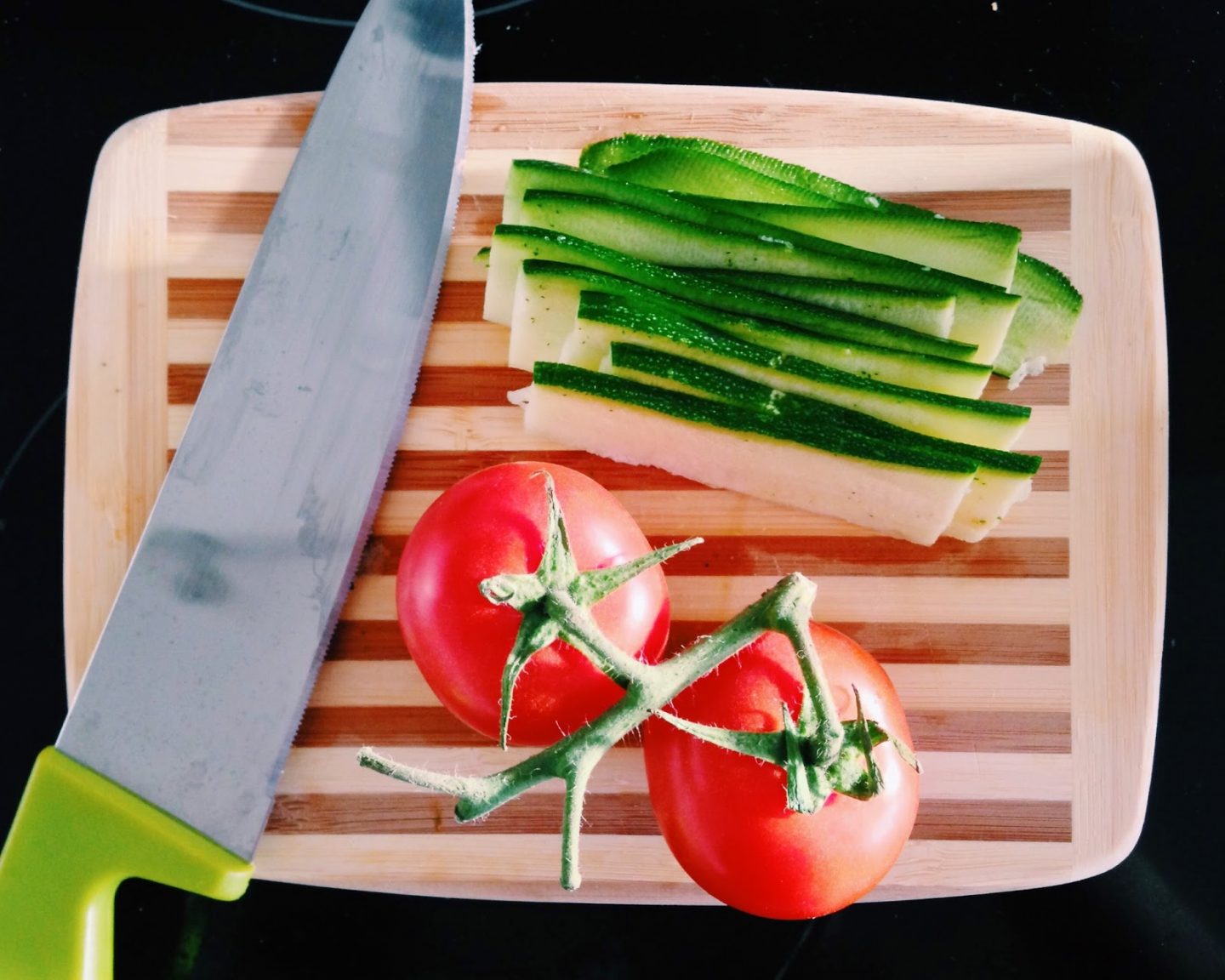
So, this post has been in the pipeline for a little while as I’ve had to go for a little dig around to make sure all my advice is up to date! While I don’t have a full set of restaurant-quality knives, I do know which knives do what, the best practice in keeping them sharp and essentially, how to make vegetarian cooking more enjoyable through the info I’m sharing below! Plus all of the guide is applicable to vegan cooking too, if that’s your diet of choice. Let me know in the comments if you learn anything here or have any advice for knife etiquette too!
What do I need my knives for?
Putting it simply, your knives will be needed for three types of produce:
- Bread
- Cheese
- Fresh produce
Eliminating the complex world of meat and fish knives, this then leaves us with five knives to master vegetarian cooking in the kitchen. The five knives you will want in your vegetarian kitchen are:
- Chef’s knife
- Bread knife
- Cleaver
- Utility knife
- Paring knife
For beginners to the kitchen, or those looking to invest wisely, start by purchasing a good-quality chef’s knife, which can be used for almost all functions, and a bread knife so as not to butcher fresh bread. The other three will be covered later, but are in no way essential so don’t feel the need to invest in expensive sets!
The perfect vegetarian chef’s knife
To verify the quality of your choice in chef’s knife, there are a few points to cover:
- Are you happy with the weight and fit of the knife in your hand?
- Is it comfortable to hold?
- How well is the knife put together?
- What materials is it made of?
- In specific, what type of steel is it made from, and does it suit your cooking style?
For info on the last question, hard steel knives stay sharper for longer but are harder to sharpen, and softer steel is the opposite. Furthermore, for a vegetarian chef’s knives, all-metal knives are often cited as suitable, with wooden-handled knives better suited for meat, and plastic classed as “cheap” despite some reputable brands such as Victorinox using it, but this is again, entirely up to you.
For a number of these knives, the blades can feature “granton” oval-shaped depressions that keep food from sticking, or even a serrated edge that will stay sharp for a long time, but is harder to sharpen once blunt. If you’re unsure, stick to a plain blade that you can sharpen at home (bread knives should be serrated, however).
It’s also relevant to point out that a Japanese santoku knife can be used in place of a chef’s knife, if that’s what you prefer!
Using your knife
To perfect the chopping motion, imagine your hand following the movement of a locomotive wheel, remaining on the edge of an imaginary circle – it should feel like your blade never fully leaves the chopping board.
With your chef’s knife, you’re going to be able to attempt a number of techniques:
- Peeling – removing the outer skin of fruit and vegetables
- Slicing – self-explanatory!
- Julienne – cutting food into short, thin strips
- Chiffonade – shredding leafy produce into ribbons
- Dicing – chopping 1/4 inch cubes
- Brunois – chopping 1/8 inch cubes
- Mincing – chopping into teeny tiny cubes!
It’s a good moment to now mention the other three knives that I listed above, as they can step up to the plate (quite literally) and help you in some of these, if you feel the need to move away from your chef’s knife.
1. Cleaver: in a vegetarian’s kitchen, the cleaver can be used for cutting through tough produce such as squash and other hard vegetables. It can also be used on its side to crush peppercorns, cloves, garlic and other spices.
2. Utility knife: this is the halfway point between a chef’s knife and a paring knife, and while useful for slicing small fruits and vegetables, it isn’t totally necessary. Often it’s a good back-up for when your chef’s knife has already been used for something else.
3. Paring knife: as the smallest knife in the pack, the paring knife has plain blade and can be used for intricate and delicate knife work such as peeling.
Knife etiquette
Alongside your knives, it is also highly recommended that you have a wooden or bamboo chopping board rather than using plates, or chopping boards of other materials – it will resist your blades’ edges and prevent knives from going blunt quickly.
On top of this, the question of avoiding blunt knives is also key – a sharp knife is a lot less dangerous than a blunt one! So sharpening does seem necessary, although there is a difference between honing (using a honing rod to reshape the current knife’s blade) and sharpening (using flat stones to remove some metal from either side of the blade – these are best used once honing no longer restores full sharpness). These can be used together, but for the most part, a honing rod should suffice so long as you invest in a good quality set.
I hope you’ve found all the advice and information compiled here useful in your quest for the perfect blade, and let me know what you choose or already use in the comments below! Happy cooking.
